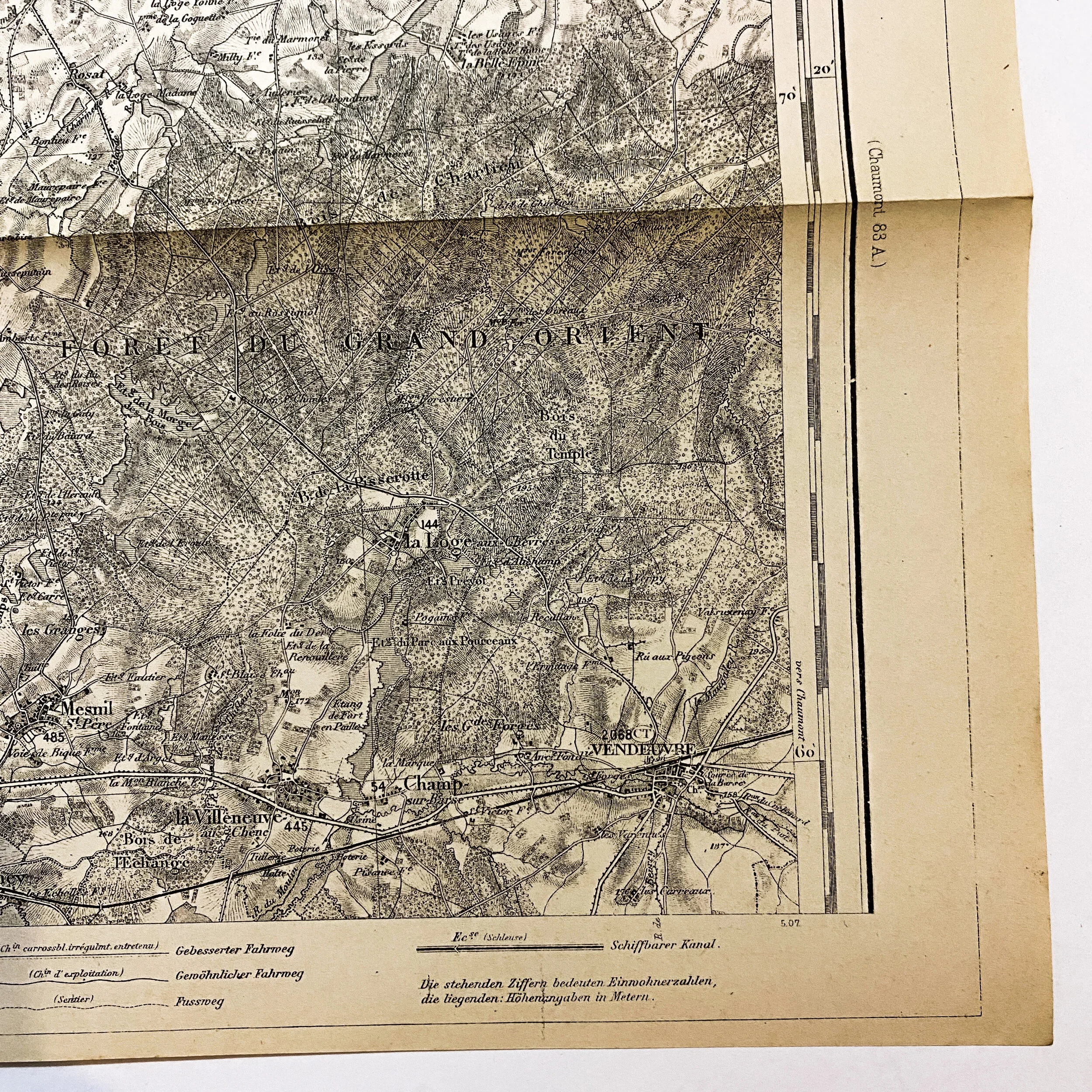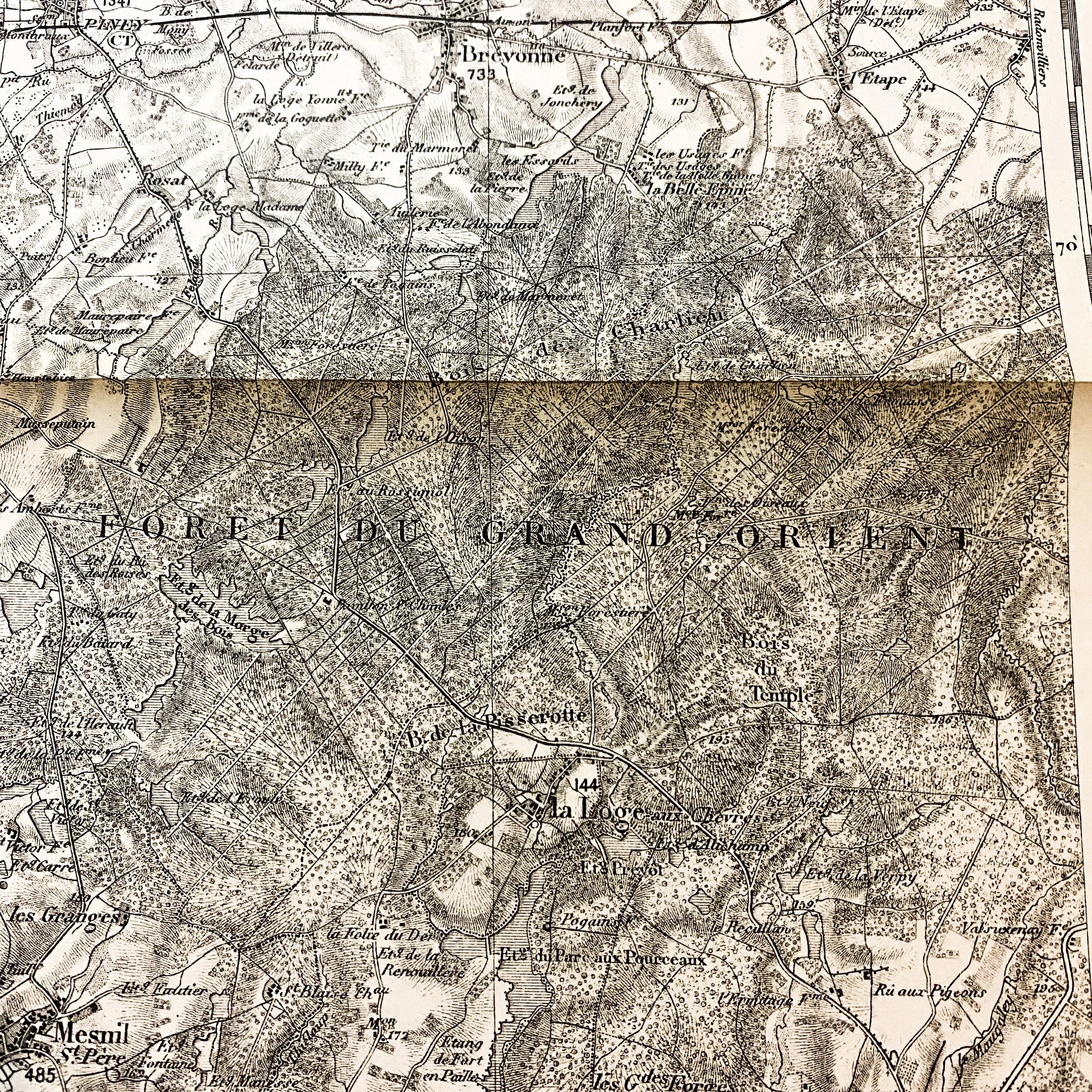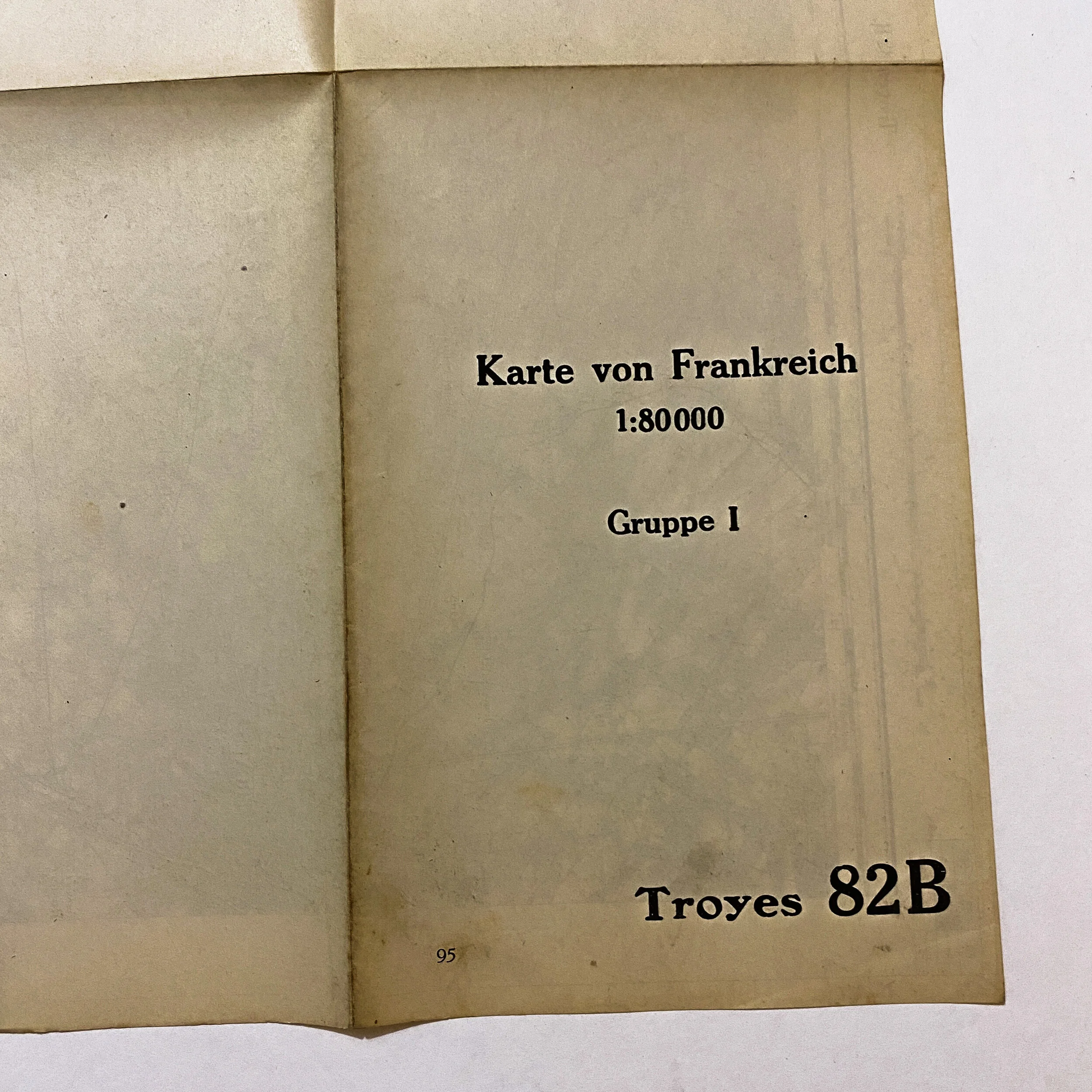Captured German Combat Map of 'Troyes 82B' France Sector











Captured German Combat Map of 'Troyes 82B' France Sector
Size: 18.5 x 12.5 inches
This original WWI German combat map of the ‘Troyes’ France sector is dated 1916. This map is one of 45 taken off of a German major on the battlefield of ‘Rupt en Weurve’ in the St. Mihiel Sector on September 13th, 1917 by Lieut. Harry G. Sheldon of the A.E.F. forces. These maps are broken into sets of 4 being label A,B,C and D of each given sector and district. Putting these section together forms a large map. They are all common scale and can be placed side by side to fit. This map is labeled ‘Troyes 82B’ and is 1 of 4 maps for this given sector.
This map was most likely used during the Champagne-Marne Offensive as Troyes held by the American A.E.F. forces near Chalons and located south of of infamous city of Remis. The map features notable locations such as the Forest DU Grand Orient, Troyes, and Blamcourt.
Champagne-Marne Offensive:
In the four great offensives from 21 March to 13 June 1918 the Germans gained considerable ground, but failed to achieve a decisive advantage at any point on the front. Furthermore, success was bought at a price in manpower and material which they could ill afford. Their more than 600,000 casualties were irreplaceable, whereas the Allied loss of some 800,000 men was soon more than compensated for by new American units arriving at the front in ever-mounting numbers. By July 1918 Allied troops outnumbered German on the Western Front. Other factors also contributed to the decline of German morale, notably the pinch of the blockade and the effectiveness of the Allied propaganda, which was distributed widely by air at the front and in German cities behind the lines. But Ludendorff refused to consider peace negotiations, and planned two more offensives for July which he hoped would bring victory. The first of the new drives was designed to capture Rheims, to make more secure the supply of the Merge salient, and to draw in Allied reserves. The second and larger offensive, destined never to be launched, would strike once again at the British in Flanders.
When the two-pronged German assault on either side of Rheims began on 15 July the Allies were prepared for it. Plans for the attack had leaked out of Berlin, and Allied airplanes had detected the unusual activity behind the enemy front. Foch had time to draw up reserves, and Petain, the French commander, skillfully deployed his troops in defense-in-depth tactics. Consequently, the German drive east of Rheims fell far short of its objective. The attack west of the city succeeded in pushing across the Marne near Château-Thierry, but was checked there by French and American units. Among the A.E.F. units involved in this action were the 3rd Infantry Division, 26th and 28th Divisions, the 42nd Infantry Division, the 369th Infantry Regiment, and supporting elements (in all about 85,000 Americans). It was here that the 38th Infantry and the 30th Infantry Regiments of the 3rd Division gained the motto, "Rock of the Marne."
By 17 July the Champagne-Marne offensive had petered out and the initiative passed to the Allies. The German people had built up great hopes for the success of this Friedensturm (peace offensive); its failure was a tremendous psychological blow to the whole nation.